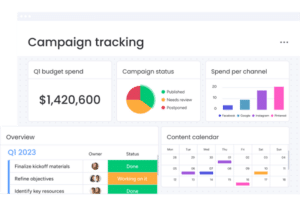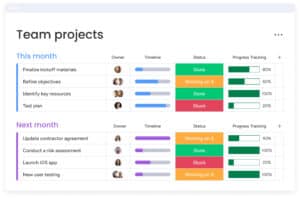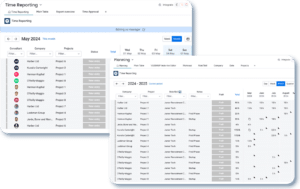Introduction
In today’s fast-paced business environment, mastering the art of efficient time management is more crucial than ever. At the heart of this challenge lies the effective management of time and attendance. A fundamental aspect that can significantly impact the overall productivity and success of an organization. The introduction of automation into this sphere has revolutionized how businesses approach this vital task. In this blog post, we’ll delve into various strategies for effective time and attendance automation. A key to unlocking higher efficiency and accuracy in workforce management.
The concept of automating time and attendance processes is not just a trend but a strategic approach to streamline operations, reduce errors, and enhance employee satisfaction. By exploring the best strategies for effective time and attendance automation, companies can not only save time and resources but also gain invaluable insights into their workforce dynamics. These insights can then be leveraged to make informed decisions, improve employee management, and ultimately drive business growth.
Whether you’re a small business owner grappling with the nuances of employee scheduling or a large corporation seeking to optimize workforce management, understanding and implementing these strategies for effective time and attendance automation is essential. As we navigate through this topic, we’ll uncover the benefits, challenges, and practical steps to successfully automate time and attendance in your organization, ensuring that this crucial aspect of your business operates like a well-oiled machine.
Stay tuned as we explore the transformative power of time and attendance automation and how it can redefine the way your business operates. By the end of this article, you’ll be equipped with actionable strategies to implement effective time and attendance automation, positioning your business for success in the modern workplace.
Understanding the Basics of Time and Attendance Automation
To fully grasp the potential of strategies for effective time and attendance automation, it’s essential to start with the basics. Time and attendance automation refers to the use of technology to track and manage employee work hours and attendance. This system replaces traditional methods such as manual timesheets or punch cards, which are often time-consuming and prone to errors. The cornerstone of this automation lies in its ability to streamline processes, reduce administrative workload, and enhance accuracy in record-keeping.
The Role of Technology in Automation
At the core of time and attendance automation is technology. Various technologies, including cloud-based systems, biometric devices, and mobile applications, play a pivotal role. Cloud-based solutions offer accessibility and scalability, allowing businesses of all sizes to implement them with ease. Biometric devices, such as fingerprint scanners, ensure secure and accurate employee identification, reducing the risk of time theft. Mobile applications empower employees with the flexibility to clock in and out remotely, an essential feature in today’s increasingly mobile workforce.
Advantages of Using Modern Tech Solutions
The advantages of using modern technology in time and attendance automation are numerous. Firstly, it significantly reduces manual errors, ensuring that payroll processing is based on accurate work hours. This accuracy is crucial for compliance with labour laws and avoiding potential legal issues. Secondly, automated systems provide real-time data and analytics, giving managers insights into workforce patterns, overtime, and potential understaffing. This data can inform decision-making and help optimize workforce management. Lastly, automation enhances employee experience by providing transparency in time tracking and easing the process of requesting time off, ultimately leading to increased employee satisfaction and retention.
Omnitas Newsletter
Sign up for our monthly newsletter to stay up-to-date on our latest blog articles, videos and events!
Thank you!
You have successfully joined our subscriber list.
Assessing Your Organizational Needs
A crucial step in implementing strategies for effective time and attendance automation is to assess the specific needs of your organization. Every business, regardless of its size, has unique requirements and challenges when it comes to managing time and attendance. Understanding these needs is the foundation upon which a successful automation strategy is built.
Identifying Unique Time and Attendance Challenges
The first step in this assessment is to identify the unique challenges your organization faces in time and attendance management. For some, it might be the complexity of handling a large, diverse workforce spread across multiple locations. Others might struggle with the intricacies of shift scheduling in a 24/7 operational environment. Smaller businesses might grapple with limited resources for managing employee attendance. Recognizing these challenges is key to selecting an automation solution that not only addresses these issues but also aligns with your company’s operational flow.
Tailoring Automation Solutions to Fit Different Business Sizes and Types
After identifying the challenges, the next step is to tailor the time and attendance automation solution to fit your business. For large enterprises, solutions that offer robust integration capabilities with existing HR systems and scalability for a growing workforce are essential. Mid-sized businesses might benefit from solutions that offer a balance of functionality and ease of use, without an extensive IT overhead. For small businesses, user-friendly, cost-effective solutions that can be easily implemented and managed are often more suitable. The goal is to find a solution that fits your current needs and has the flexibility to adapt as your business evolves.
Implementing Time and Attendance Automation
Implementing strategies for effective time and attendance automation is a transformative process that involves careful planning and execution. It’s not just about selecting the right tools but also about ensuring they are integrated seamlessly into your existing operations. This stage is critical in making the transition to automated systems both efficient and effective.
Step-by-Step Guide on Implementing an Automated System
The implementation process can be broken down into several key steps. First, define the specific goals you aim to achieve with automation, such as reducing payroll errors, improving compliance, or enhancing employee satisfaction. Next, choose a system that aligns with these goals and your identified organizational needs. Once selected, plan the rollout of the system, including a timeline and the necessary training for staff. Testing the system in a controlled environment before a full-scale implementation is also crucial. Finally, launch the system, providing support to employees and management to ease the transition.
Best Practices for a Smooth Transition
A smooth transition to an automated time and attendance system hinges on several best practices. These include engaging with stakeholders at all levels early in the process to gain buy-in and address concerns. Providing comprehensive training and support materials to employees ensures they are comfortable and proficient with the new system. Regularly soliciting feedback post-implementation helps identify and address any issues promptly. It’s also important to monitor the system’s performance against your initial goals, making adjustments as necessary to ensure it continues to meet your organizational needs effectively.
Integration with Existing Systems
Another key aspect of implementation is the integration of the new time and attendance system with existing HR and payroll systems. Effective integration ensures data consistency and streamlines processes, reducing the manual effort and potential for errors. Utilizing APIs and middleware, where necessary, can facilitate this integration, allowing for a more cohesive and efficient workflow. The goal is to create a harmonious ecosystem where all systems work together seamlessly, enhancing the overall efficiency of your HR operations.
monday.com and Make in Time and Attendance Automation
In the realm of strategies for effective time and attendance automation, two powerful tools stand out: monday.com and Make. These platforms offer unique features and capabilities that can significantly enhance the automation process. This ensures that your time and attendance management is not only efficient but also aligned with your business’s evolving needs.
How monday.com Can Streamline Time and Attendance Processes
monday.com, known for its versatility and user-friendly interface, offers robust solutions for time and attendance management. With its customizable workflows, monday.com allows businesses to create a time-tracking system that perfectly aligns with their operational requirements. Features like time-tracking widgets, automated notifications, and integrations with calendar apps make it an excellent tool for managing employee schedules, tracking work hours, and ensuring compliance with labour laws. The platform’s real-time data capabilities provide managers with instant insights into attendance patterns, facilitating informed decision-making and workforce planning. Additionally, Omnitas Time Reporting Solution for monday.com further streamlines this process with additional capabilities and more extensive tracking.
Leveraging Make for Custom Automation Workflows
Make takes automation a step further by allowing the creation of custom, intricate workflows that can connect monday.com with other business tools. This integration capability enables businesses to automate not just the tracking of time and attendance, but also related processes such as payroll processing, leave management, and reporting. For example, you can create a workflow that automatically syncs time-tracking data from monday.com with your payroll system, streamlining the entire payroll process. The flexibility and power of Make make it an invaluable tool in crafting a comprehensive, automated time and attendance system that works seamlessly with your existing business ecosystem.

Measuring the Success of Your Automation Strategy
Implementing strategies for effective time and attendance automation is just the beginning. To truly gauge the impact and effectiveness of these strategies, it’s crucial to measure their success. This involves setting up key metrics and performance indicators that align with your initial goals.
Key Metrics and KPIs to Track
When measuring the success of your time and attendance automation strategy, several key metrics and KPIs (Key Performance Indicators) should be considered. These include the accuracy of time tracking, the rate of compliance with labour laws, the efficiency of payroll processing, and the overall employee satisfaction with the system. Additionally, metrics like reduction in administrative workload, decrease in payroll errors, and improvements in workforce management efficiency are also valuable indicators. Regular monitoring of these metrics can provide insights into how well the automation strategy is performing and where improvements can be made.
Regular Review and Adjustment of the Automation Strategy
The world of work is constantly evolving, and so should your time and attendance automation strategy. Regularly reviewing and adjusting your strategy is essential to ensure that it continues to meet the changing needs of your business and workforce. This might involve updating your software, tweaking your workflows, or even adopting new technologies as they emerge. The key is to remain flexible and responsive. This ensures that your automation strategy remains aligned with your business objectives and workforce dynamics.
Continuous Improvement and Adaptation
In the spirit of continuous improvement, it’s important to stay abreast of the latest trends and advancements in time and attendance automation. Encouraging feedback from employees and managers who interact with the system daily can provide invaluable insights for refinement. Additionally, benchmarking your practices against industry standards can help identify areas for improvement. By adopting a mindset of continuous adaptation and improvement, you can ensure that your time and attendance automation strategy not only serves your current needs but is also poised to meet future challenges.
Conclusion
As we’ve explored throughout this article, implementing strategies for effective time and attendance automation is crucial for the modern workplace. By leveraging tools like monday.com and Make, businesses can streamline their processes, enhance accuracy, and ultimately improve their overall operational efficiency. Whether it’s through customizing workflows, integrating various systems, or measuring success through key metrics, the path to effective automation involves a strategic approach tailored to your unique business needs.
However, understanding and implementing these strategies can be a complex process, one that requires expert guidance to ensure optimal results. This is where we, at Omnitas, come in.
Book a Free Consultation with Omnitas
If you’re curious about how to leverage monday.com and Make for effective time and attendance automation in your organization, we’re here to help. Book a free consultation with us below, and let our team of experts guide you through the process. With our in-depth knowledge and hands-on experience, we can help you tailor a solution that fits your specific requirements, ensuring that you get the most out of these powerful tools.
Try Out the Tools with Our Free Trial Links
For those who are ready to dive in and experience the capabilities of monday.com and Make firsthand, we’ve got you covered. Use our free trial links to explore these tools and discover how they can transform your time and attendance management. It’s an excellent opportunity to see the benefits for yourself and understand how these platforms can fit into your business strategy. Try Monday.com | Try Make
In conclusion, with the right strategies and tools, time and attendance automation can be a game-changer for your business. Embrace the technological advancements and expertise available to you, and take the first step towards a more efficient, productive, and compliant workplace.
If you found this blog post useful, make sure to sign up for our monthly newsletter below. Stay in the loop regarding all things business efficiency!
























